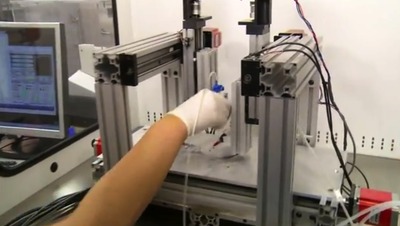Researchers at the University of Iowa College of Engineering’s Center for Computer Aided Design have developed a rather interesting prototype bioprinter, capable of printing living tissue. The device, made by Ibrahim Ozbolat, assistant professor of mechanical and industrial engineering and doctoral student Howard Chen, does something no other 3D printer can do, whether for bioprinting or non-bioprinting: print with multiple arms simultaneously.
The problem with multiple arms is that they can easily crash into each other. Solving this problem is so difficult that all other 3D printing approaches simply avoid the problem by having only one printing arm in motion at a time. There can be no collisions if there’s only one arm.
Somehow the UI researchers developed an ingenious solution to this challenge and their new (unnamed) bioprinter is capable of very complex print operations involving multiple arms. This permits much more rapid printing of living tissue, which frequently involves multiple materials (e.g. embedded blood vessels, surfaces, muscles, etc.) We suspect there are severe time limits involved when printing living matter, while “normal” 3D prints can freely take many hours or days to complete.
What are the researchers printing? They’ve developed a potentially game-changing item:
One of the most promising research activities is bioprinting a glucose-sensitive pancreatic organ that can be grown in a lab and transplanted anywhere inside the body to regulate the glucose level of blood.
If it’s broken – print a replacement!


